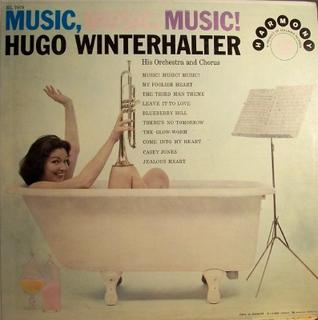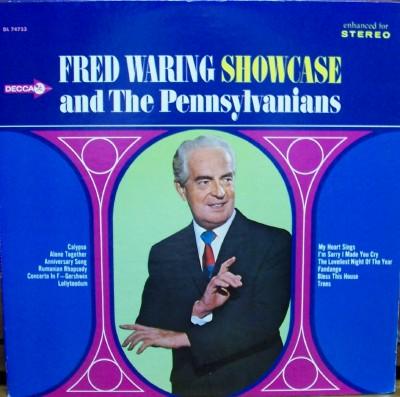So, it's Sunday afternoon, and I'm waiting for the last of the Collins H. Driggs 1940 Novachord recordings to upload to boxnet.com, the storage site I use--a site which has been performing very well in recent weeks, I should note. Box.net seems to have done an admirable job of cyber-pest-control, getting rid of (hopefully) all of its bugs--or at least the ones that have been biting my Dell. Of course, I've just jinxed the heck out of myself by typing that. Never directly acknowledge good luck--never. And never admit that you're superstitious. This is the 21st century, after all. Life has never been more modern. We live in an age of animal-cloning, planet-surface radar-mapping, electronic vote-"counting," and high-resolution satellite-image-taking from space. And, if President Bush has his way, our classrooms will soon have Intelligent-Design-teaching alongside that stupid evolution stuff. In time, I hope to introduce my theory of Stupid Design (SD) into public classrooms. SD explains, among other things, how politicians like Bush and Ohio governor Taft manage to pop up in our species despite millennia of otherwise additive human evolution.
Wow. "Additive evolution"--a term I made up--seems to be an actual scientific term. Cool. Me, I mean.
Sometimes things get to me too much. On my MYPWHAE and Fields on Fire blogs, I've been dealing with the issue of gospel-song authorship, which mostly involves finding out who really wrote the sacred country tunes attributed to A.P. Carter. Apparently, there's this notion that Carter and/or the Victor label were careful about their borrowings, i.e. that they chose either copyright-expired material or material that never had a copyright. Right.
Keep on the Firing Line was a fairly new song when the Carters swiped it.
Will My Mother Know Me There? wasn't as new, but it still had its copyright. As did
Will the Circle Be Unbroken. So, no, they weren't careful at all.
Which doesn't bother me. What the Carters stole, or didn't steal, 75 years ago is not the issue. The issue is that, as many years later,
Keep on the Firing Line is still treated as a Carter Family song. Isn't three-quarters of a century too much time for the record to still be uncorrected? (By and by, or otherwise?)
Authorship is sure an important issue when it comes to rock or pop standards, though. Something tells me that
Stairway to Heaven was
not attributed to Dolly Parton when she recorded her version of it. And I doubt that
Night and Day or
Witchcraft were copyrighted by Frank Sinatra at any point.
But what about the artistic possibilities of good jazz? That's what Raymond Scott wrote about in the July, 1943 issue of
Etude--I found Scott's piece while skimming through my copy of same the other day. "Deep" is not a word I'd use to describe the essay, and "in check" is not a word I'd use to describe Scott's ego.
Etude introduced him as "one of the most vital figures in present-day popular music," which is interesting, because it means that all the folks touting Scott as the one of the great composers of the 20th century are in symphony with the editor of
Etude some 60 years ago. I love it. The more things change....
I've owned Scott records (78s, mainly) over the years, but no one ever informed me that he was the last century's Mozart, and, apparently possessing tin ears, I heard nothing remarkable in his compositions. I must not have, anyway, because his sides are no longer in my collection. My reaction to Scott is summed up by an article featured at the Raymond Scott website--a 1939
Metronome piece, maybe? (can't remember)--which complains that all of the guy's stuff sounds the same, its avant garde reputation notwithstanding. What's interesting is that the present praise for Raymond seems to be little different from the press he was getting in his day. A cynic might suggest it's even an extension thereof. But I'm no cynic. (Ahem.)
This is where Scott and Elvis Presley have a lot in common. The explanations for their greatness seem to have been conceived right off the bat, then typed out and stuffed into envelopes marked "Open in the Event of Posterity." You know all the stuff about Elvis combining country and blues and creating a new form of music? Sam Phillips wrote that script at Sun, possibly before he'd even found his R&B-singing truck driver.
Look magazine, in 1956, attributed rock and roll to "Negroes," which was both astute and correct. This was the commonly-accepted view. I suspect Phillips' tale would have been greeted by attendants in white coats.
Then, sometime during the 1970s, rock journalists picked up Phillips' crank r&r-genesis story and decided it would sell more magazine copies than the boring truth, and, in time, Sam's account became the official history. And, so, we celebrated rock and roll's "50th anniversary" last year. And Sun Studios probably had tourists lined up around the block. I wonder if Sam was watching this through his Heavenly telescope and having a good laugh? (Actually, Heaven has probably progressed to digital satellite images by now.)
Back to Scott, I'm not sure I can ever listen objectively to his music. Media hype is a powerful, and often negative, force. This is because the media has the power to make hype real. There's no burden of proof--an assertion, by itself, is sufficient. Sinatra is great, for example. Why? Well, because he was. Bob Dylan's lyrics are "important." Why? Because they are. We're supposed to
think that some consensus, popular or otherwise, has been reached. Keep in mind, however, that no such process is necessary for an idea, any idea, to qualify for a plug on
Fresh Air or at WMFU, or at any of the other cool-culture dispensing stations.
Yes, these things are very subjective. Good and bad aren't carved in stone. You say "tomato," and I say "lettuce." But ideas and notions must be allowed to evolve naturally, to sink or swim in the environment of other ideas and notions. Media hype allows the hyperbolically-fittest themes to survive unopposed; if it plays, it stays. A history of popular music based on, and around, hype is a shallow and narrow history whose highlights may or may not reflect the actual high points of evolution. As for the actual events--forget it. We can't even get the right credits for good old gospel songs that were published in the millions of copies. A hundred years from now, maybe websites will be attributing the entire Great American Songbook to Tony Bennett. (And he can have it, says my cat, Pery, who is no fan of that book.)
Lee




